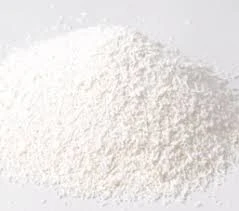
Exploring the Safety and Uses of E415 Food Additive in Modern Cuisine
Understanding E415 The Food Additive and Its Role in Food Industry
Food additives play a significant role in the modern food industry, enhancing flavors, preserving freshness, and improving the texture of various products. One such additive, E415, commonly known as xanthan gum, has gained popularity for its versatility and effectiveness. In this article, we will explore what E415 is, its uses, benefits, and any potential concerns associated with its consumption.
What is E415?
E415, or xanthan gum, is a polysaccharide derived from the fermentation of sugars by the bacterium *Xanthomonas campestris*. It was discovered in the 1960s and has since become a staple in the food manufacturing industry due to its remarkable thickening and stabilizing properties. Xanthan gum is often found in gluten-free products, sauces, dressings, baked goods, and dairy products.
Uses of E415 in Food Products
Xanthan gum is primarily used as a thickening agent and stabilizer. It has the ability to create a gel-like consistency, which is particularly valuable in products such as gravies, soups, and sauces. By providing a smooth, even texture, xanthan gum helps to improve the overall mouthfeel of these items, making them more palatable.
One of the most significant advantages of E415 is its ability to maintain stability in emulsions. For instance, salad dressings often contain oil and vinegar, which tend to separate over time. Xanthan gum helps to keep these ingredients mixed, ensuring a consistent product that retains its visual appeal and flavor over time.
Additionally, xanthan gum is crucial in gluten-free baking. It imitates the elasticity that gluten provides in conventional baked goods, helping to improve the texture and rise of gluten-free bread and pastries. This property makes E415 a vital ingredient for individuals with gluten intolerance, allowing them to enjoy a wider variety of foods without sacrificing quality.
Benefits of E415
e415 food additive

E415 offers numerous benefits to both manufacturers and consumers. For food manufacturers, xanthan gum provides several advantages in production processes, including
1. Stability Xanthan gum enhances the stability of emulsions and foams, which is crucial for maintaining product quality during storage and transportation. 2. Texture Improvement E415 contributes to the smooth and creamy texture of products, enhancing the overall sensory experience for consumers.
3. Versatility Xanthan gum can be incorporated into a wide range of food products, making it a valuable ingredient across various sectors.
From a consumer perspective, xanthan gum enables individuals with dietary restrictions to enjoy foods that mimic the textures and flavors of traditional products. Furthermore, as a soluble fiber, xanthan gum may have potential health benefits, including aiding digestion and promoting satiety.
Potential Concerns
While xanthan gum is generally recognized as safe (GRAS) by the Food and Drug Administration (FDA), some individuals may experience gastrointestinal issues when consuming large amounts. Symptoms such as bloating, gas, or diarrhea may occur in sensitive individuals or when xanthan gum is consumed in excessive quantities.
Moreover, as with any food additive, it’s essential for consumers to be aware of the sources of xanthan gum and its potential for cross-contamination. Those with allergies to corn or soy should take care, as xanthan gum is sometimes derived from these sources.
Conclusion
E415, or xanthan gum, is a multifunctional food additive that plays an essential role in improving the texture and stability of various food products. Its versatility makes it a favored ingredient in gluten-free baking and sauces, allowing manufacturers to create appealing products that cater to diverse dietary needs. While xanthan gum is generally safe for consumption, moderation is key, as with any additive. Understanding the role of E415 in our food can help consumers make informed choices about the products they enjoy.
-
Pure Sodium Dichloroisocyanurate Dihydrate | Powerful DisinfectantNewsAug.29,2025
-
Industrial Chemicals: Quality & Purity for Every IndustryNewsAug.28,2025
-
Nitrile Rubber Honoring Strict Production StandardsNewsAug.22,2025
-
Aspartame Ingredients Honoring Food Safety ValuesNewsAug.22,2025
-
Fertilizer for Balanced Plant NutritionNewsAug.22,2025
-
Cyanide Gold Processing with High Purity AdditivesNewsAug.22,2025
-
Formic Acid in Textile Dyeing ApplicationsNewsAug.22,2025
Hebei Tenger Chemical Technology Co., Ltd. focuses on the chemical industry and is committed to the export service of chemical raw materials.
-

view more DiethanolisopropanolamineIn the ever-growing field of chemical solutions, diethanolisopropanolamine (DEIPA) stands out as a versatile and important compound. Due to its unique chemical structure and properties, DEIPA is of interest to various industries including construction, personal care, and agriculture. -

view more TriisopropanolamineTriisopropanolamine (TIPA) alkanol amine substance, is a kind of alcohol amine compound with amino and alcohol hydroxyl, and because of its molecules contains both amino and hydroxyl. -

view more Tetramethyl Thiuram DisulfideTetramethyl thiuram disulfide, also known as TMTD, is a white to light-yellow powder with a distinct sulfur-like odor. It is soluble in organic solvents such as benzene, acetone, and ethyl acetate, making it highly versatile for use in different formulations. TMTD is known for its excellent vulcanization acceleration properties, which makes it a key ingredient in the production of rubber products. Additionally, it acts as an effective fungicide and bactericide, making it valuable in agricultural applications. Its high purity and stability ensure consistent performance, making it a preferred choice for manufacturers across various industries.





